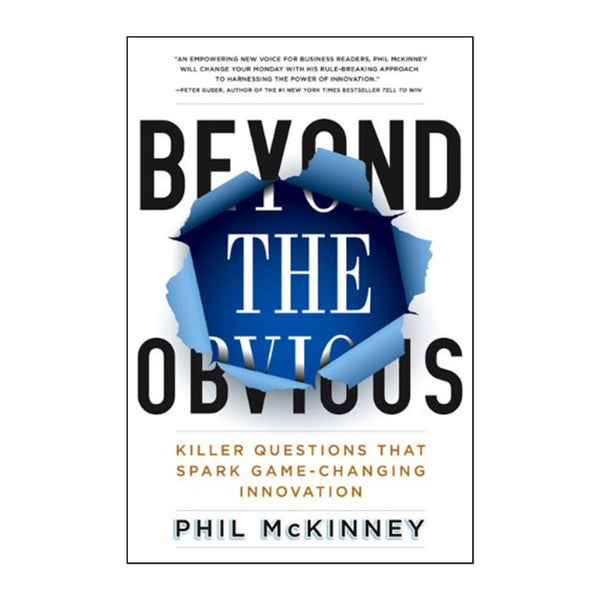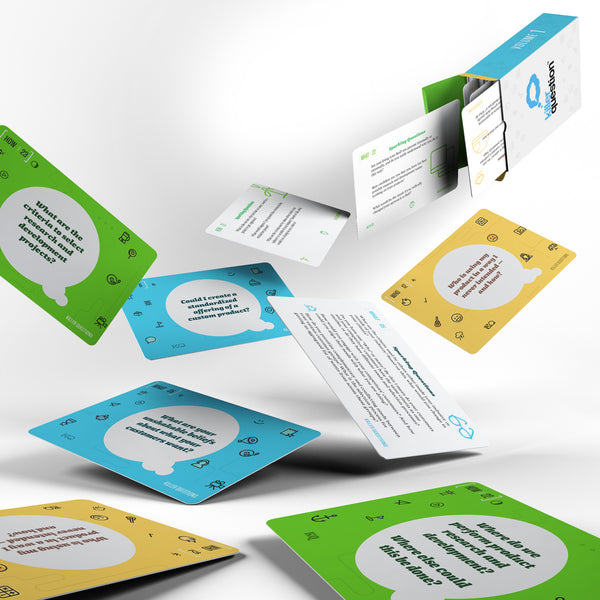The 9 Types of Innovation Tools
The number of innovation tools numbers into the 1000’s. How do you choose? We will look at the categories of tools and what they can provide. Then you should apply the ones that seem the best fit to a few of innovation efforts. Afterwards evaluate their impact. If they work, then share across your organization. If you saw little to no impact, then move on to the next tool. Also, talk to other innovators (theinnovators.community).
In order to unleash your creative potential, it's important to understand the category of innovation and creativity tools available.
"Tools are enablers. A hammer in the hand of an expert carpenter can create an amazing house. A scalpel used by an expert surgeon can save a life. And innovation tools used correctly can lead to an innovation that changes the world."
9 Categories of Innovation Tools
It's important for companies to keep up with the latest innovations and creativity tools available because it has an impact on their performance. Tools make us better; they help us do things we couldn't do on our own.
Here are 9 categories of innovation tools to consider.
1. Idea sketching tools
Idea sketching tools can be extremely helpful in speeding up the innovation process. By quickly and easily putting your ideas down on paper, you can explore a wider range of possibilities and see which ones work best. This can save time and energy by eliminating ideas that are not likely to work before you invest too much into them. Additionally, idea sketching tools can help you communicate your ideas more effectively to others.
Tools for idea sketching come in all shapes and sizes, but the basic idea is to quickly and easily put your ideas down on paper. This can be done with a simple pen and paper, or with more sophisticated tools like mind mapping software or electronic drawing pads. The important thing is to have something that allows you to easily express your ideas in a visual way.
2. Idea Generation tools
The more ideas you come up with, the better your chances are of discovering a great one. But it’s not easy to find time and space to think creatively in today’s fast-paced world. That’s why many use tools like creative thinking card decks, mind maps, freewriting, or ideation exercises (like brainwriting) to help them generate lots of new ideas quickly. These tools can be used individually or in groups; they give you freedom from external distractions and enable you to work on your own terms without feeling rushed by deadlines.
3. Creativity tools
Creativity tools can be the difference maker in an organization’s success. They can help you and your team innovate faster and better than ever before. But what are creativity tools, anyway? And how do they work? There are many different types of creativity tools out there for a variety of purposes, but the most common ones fall into three main categories: ideation, collaboration, and evaluation.
The ideation category is made up of methods such as brainstorming tools which help generate new ideas to solve problems or accomplish goals. The collaboration category includes techniques like facilitated team exercises that allow people to share their ideas with one another more easily and to encourage building on each others ideas. Finally, the evaluation category contains methods like voting for the best ideas or ranking project priorities which can help you and your team choose the best solution to a problem among several options.
4. Prototyping Tools
Prototyping tools can be extremely helpful in speeding up the innovation process. By allowing you to quickly and easily create a mock-up of your idea, these tools can help you get feedback from others sooner. This feedback can then be used to improve your idea before you move on to the final product. Additionally, using prototyping tools can help you save time and money by avoiding costly mistakes later on in the process.
5. Visualization Tools
Visualization can help you convert ideas into reality faster and more efficiently than ever before. Imagination alone has limits; it cannot create what does not already exist in your mind's eye. Visualization, on the other hand, uses mental images to generate new ideas that are closer to reality than they would be otherwise - thus speeding up innovation success by giving us access to different perspectives and starting points for creativity. A flowchart or a process map, for example, is a type of visualization tool that can make your processes more efficient and effective by representing different stages of work as a number of boxes linked with lines and arrows indicating the path from start to finish.
6. Market Research Tools
Marketing research helps innovators identify customer needs, problems, and potential solutions. The best marketing tools provide quantitative data about the general population as well as specific demographics to help with product development.
Marketing research also provides valuable insights into what customers want from a company's products or services that can be used for improvements at every stage of the process from design through production and distribution. Market research is an integral part of creating innovative new products because it allows you to understand your target audience before spending time and resources on something they may not find useful or want to purchase. Conducting market research will drastically reduce costly mistakes by giving entrepreneurs information on how people currently use a product or service and what they want in the future. By using marketing research tools, it is easier to determine if the public will like an idea, when its best to launch it, and how you can improve on your initial project.
7. Trend Analysis Tools
Trend analysis software tools helps you spot patterns in social media, news feeds, and other sources so you can stay up-to-date on what's going on with your industry or niche market.
It also helps to identify shifts in consumer behavior before they happen—so that when a new trend does emerge, you're already ahead of the curve! Trend analysis tools can help anyone looking to innovate come up with fresh ideas faster than ever before--and give them the opportunity to act on those ideas before the competition even knows what hit them.
8. Technology Scouting Tools
Technology scouting tools can help you quickly identify and assess new technologies that may be of interest.. These tools can help you stay ahead of the curve, and make sure you're aware of the latest and greatest technologies that could benefit your organization.
A special class of consultants called technology scouts, are able to use their understanding of new technologies and their potential applications to identify new products that could be beneficial to the clients they serve. Scouts will take this knowledge and disseminate it to the companies they represent by pointing out technologies that may be of interest. This can help companies rapidly discover new techniques and products that will allow them to stay competitive in their markets.
9. Business Model Generation Tools
Business model generation tools can help you to explore and analyze a wide range of business models for your product or service. This, in turn, can help you to select the best model for your innovation project. There are a number of different business model generation tools available, each with its own strengths and weaknesses. Some of the most popular tools include the Business Model Canvas, the Value Proposition Canvas, and The Lean Startup Methodology.
Conclusion
Tools are important for unleashing creativity and innovation because they provide a way to focus the mind and increase productivity. When you have the right tools, you can do more in less time and with greater accuracy. So, if you're looking to unleash your creative potential, make sure to invest in the right tools and resources.
“The best way to unleash your creative potential is to invest in the right tools and resources.”





